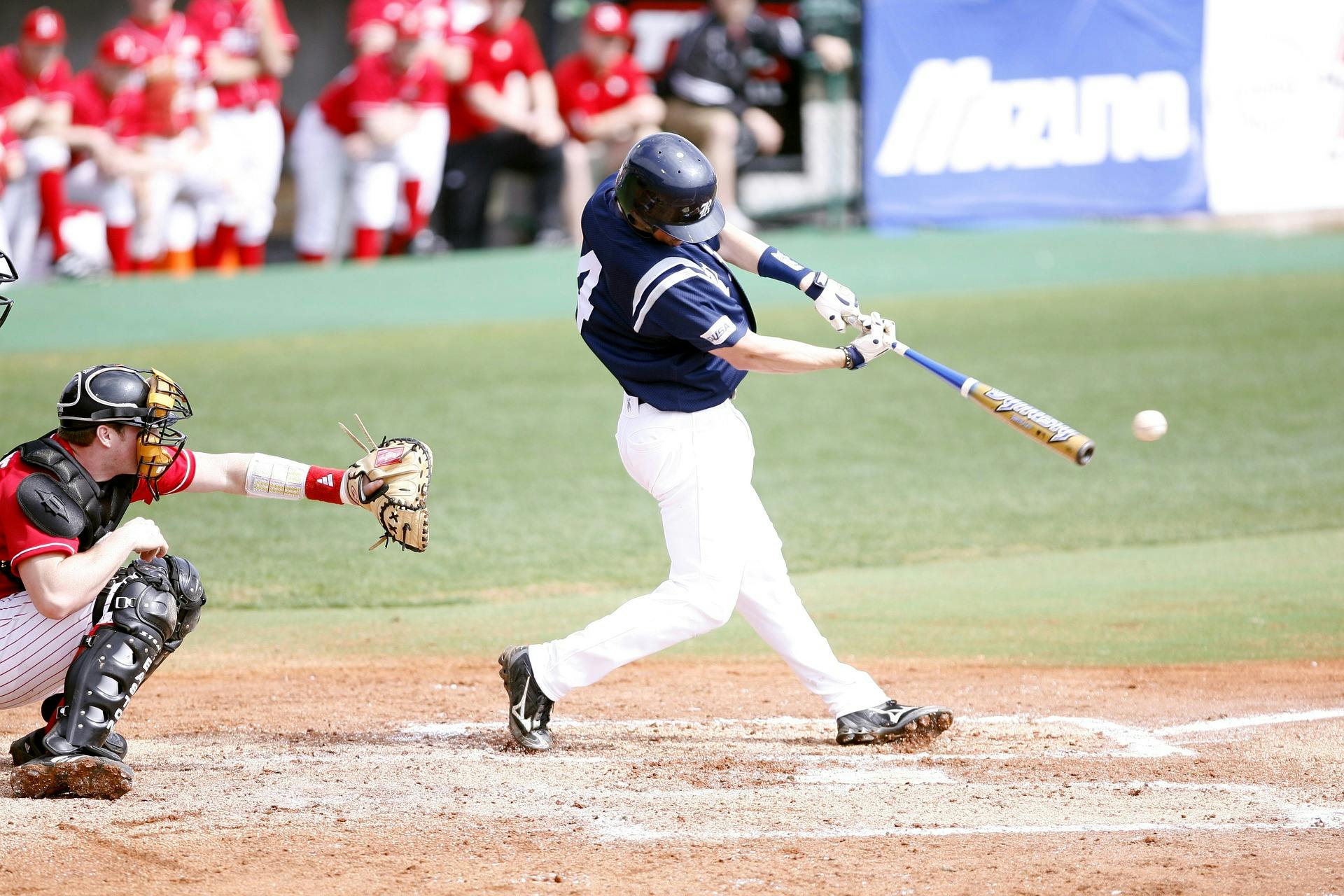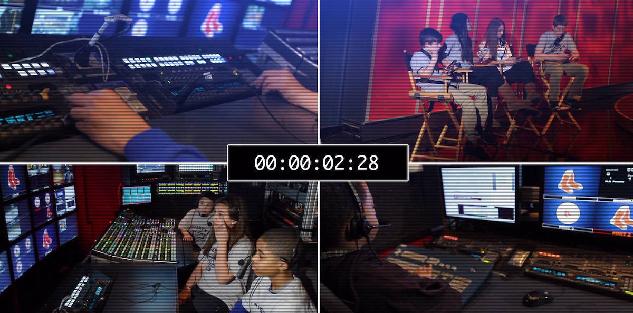Featured courses
- Understanding The Shift by Brandon Ogle
- Two Drills to Improve Outfield Movement and Communication by Grant Young
- The Ultimate Resource For Coaching Youth Baseball by Jackson Chlebowy
- Become a Master at Bunting by Brandon Ogle
- 5 Reasons Why There Is More To Good Base Running Than Just Speed by Brandon Ogle
- Three Injury-Prevention Tips For Your Offseason Pitching Program by Grant Young
- How to Teach Hitting to the Next Generation by Grant Young
- Developing Defensive-Minded Baseball Catchers by Grant Young
- 3 Baserunning Tips to Score More Runs in Baseball by Grant Young
- 5 Outfield Drills to Work on in Season by Alec Burris
- Keys For Scoring More With Runners on First and Third Base by Grant Young
- How to Develop Your Game to Become a Five-Tool Player by Brandon Ogle
- 3 Coaches Share the Keys to Running Baseball Practice the Right Way by Grant Young
- Four Drills to Sharpen a Baseball Hitter’s Vision at the Plate by Grant Young
- Four Quotes to Hit Better With Two-Strikes by Grant Young
- Four of Former MLB Pitcher Juan Nieves’ Movement-Based Pitching Drills by Grant Young
- Two Tips For Developing an Elite Baseball Bullpen by Grant Young
- Overcoming the Four Challenges of Indoor Baseball Practices Because of Weather by Grant Young
- Three Tips to Make Your Baseball Team Mentally Tougher by Grant Young
- Three Priceless Philosophies to Motivate Your Baseball Team by Grant Young
- Three Offseason Baseball Drills to Simulate Competition by Grant Young
- Three Baseball Offseason Strength and Conditioning Essentials by Grant Young
- Important Ways to Improve Your Baseball Team’s Baserunning by Grant Young
- Three Ways to Perfect Hitting Mechanics From an MLB Icon by Grant Young
- Catchers can influence pitchers...for bad or good by Drew Johnson
- Throwing Strikes and Playing Good Defense Equals Wins by Jose Ortiz
- Legendary Indiana Head Baseball Coach Bob Morgan’s Offensive Theory by Grant Young
- Tennessee Head Baseball Coach Tony Vitello on How to Practice Baserunning by Grant Young
- Three Great T-Ball Drills For Youth Baseball Players by Grant Young
- How to Manage a Baseball Pitching Staff by Grant Young
- Three Uncommon Tips to Become a Better Hitter by Grant Young
- How a Baseball Coach Can Develop Strike Throwers by Grant Young
- Drills to Develop Elite Baseball Outfielders by Grant Young
- Baseball Training Exercises to Strengthen Arm and Bat Speed by Grant Young
- How to Use Bunting to Score More Runs by Grant Young
- How To Build An Elite Baseball Infielder by Grant Young
- Three Drills to Improve Your Baseball Team's Infield Play by Grant Young
- Three Keys to Curating a Pitching Staff’s Success by Grant Young
- 3 Techniques to Develop a Baseball Player’s Hitting Approach by Grant Young
- How to Cultivate Confidence Within Your Pitchers by Grant Young
- 5 Every Day Drills To Help You Become A Better Catcher by tyler Linderman
- How to Throw A Curveball by Brandon Ogle
- How to Assemble a Lock-Down Bullpen by Brandon Ogle
- How to Throw a Sinker by Brandon Ogle
- How to be a Smart Baserunner by Brandon Ogle
- Improving a player's slugging average by Phillip Woolgar
- The 8 Fundamentals of Pitching by Drew Johnson
- How to Throw a Deceiving Changeup by Brandon Ogle
- Step Up Your Outfield Defense With These Three Drills by Jose Ortiz
- 8 Baseball Drills Every Player Should Practice by Drew Johnson
- How To Become An Elite Defensive Outfielder by Tyler Linderman
- 5 Tips For Crushing A Curveball by Johnny Grassi
- LEGENDS FOR YOUTH INCLUSION BASEBALL CLINIC by Phil
- Fourteen Ways To Turn A .300 Hitter Into A .210 Hitter by Jay P. Granat, Ph.D.
- How To Become The Ideal Leadoff Man by Brandon Ogle

How To Become The Ideal Leadoff Man
- By Brandon Ogle
Simply put, you can’t describe a leadoff man with just one skill. Analysts
will typically say they prefer certain attributes, but the truth is they
need to possess a little bit of everything. Legendary leadoff man Kenny
Lofton once said, “You can’t put your shoes on without your socks.
Everything works together – shoes, socks, pants and shirts. If one is
missing, you’re in trouble.” This analogy is referring to the varying
skillsets needed to effectively be the man at the top.
High On-Base Percentagetage
First and foremost, leadoff men need to be able to get on base. Their
primary responsibility is to give the power bats an opportunity to drive
in some runs, which is what they do best. However, the important thing
to understand here is that there are many ways to get on base. The on-
base percentage statistic shouldn’t be confused with batting average. In
general terms, it is calculated on every time you reach base by way of a
hit, walk or hit by pitch. So, with this being the case, leadoff men need to
be creative in getting on. Some guys possess the speed to bunt
frequently and get on. Another scenario would be ones with a
discerning eye that are tough to strikeout, while others are pure hitters
that can hit to all fields. There are many ways to get on, but coaches are
generally just going to be worried about whether or not you get on.
Energizedized
Since leadoff man possess the opportunity to get the entire dugout
amped up right away, they need to be an energizing presence. Often
times, I refer to this as the leadoff man having a certain level of swagger.
I’m not saying they should do something to show the pitcher up, but
rather get the game started in a positive manner. Whether it be working
a 10-pitch walk or beating out an infield single, there are many
possibilities. Hitting is a contagious trait and when you see people
before you having success off a pitcher right off the bat, it can lead to
good fortunes for the rest of the squad. As for the actual characteristic of
being an energetic player, it’s reliant solely on production and
personality. For the personality side, you can’t really teach this, it
mainly comes down to the person. However, production can be
developed through experience in the game.
Fast on the Base Pathsaths
One trait that often comes to people’s mind immediately when thinking
about leadoff men is their speed. You’re almost never going to see
someone that’s not fleet-of-foot in the opening spot. There are many
situations where this speed comes in play. First, it allows them to beat
out bunts and infield grounders to increase that on-base percentage.
Next, they can steal bases more easily to put themselves in scoring
position for the power bats behind them. Finally, they can take extra
bases on hits, such as going to first to third. Each of these plays can
greatly affect a game. The offseason is a great time to improve this speed
if you believe it is something holding you back from manning the leadoff
spot. There are many ways to do so, but I urge practicing 100 meter
sprints on the track. 100 meters are long enough to ensure you can
accelerate quickly and keep top speed going for longer distances. In
addition, you should practice you’re reaction time and how you’ll time
jumps. This may come from agility exercises or even watching others
appropriately time jumps.
Patient at the DishDish
One aspect of the on-base percentage discussed above is the ability to
secure walks and work the counts. Unless you’re like the Kansas City
Royals’ Alcides Escobar, a leadoff man should work the pitcher and
make him throw plenty of pitches. Sometimes, the first pitch might be a
fastball thrown right down the middle. In these instances, it might be
wise to be first-pitch swinging. However, other times, the pitcher will
try to get you to swing at something outside the zone. It is at these times
where a leadoff man should possess the ability to utilize a discerning
eye and work the count. Another element to keep in mind is the concept
of good outs. Occasionally, these can include outs that move the runner
up a base, while it can also be ones that make the pitcher work and tax
his or her pitch count. Even if you get out, making the pitcher throw 10-
plus pitches can get him or her out of the game quicker.
Being disciplined at the dish is critical to a leadoff man’s job. This video
from former Major Leaguer Matt Nokes goes over many of the
fundamentals to successful hitting. Don’t ignore the basics; they’re at the
crux of all great hitters!
Occasional Powerower
While I’ve discussed extensively the element of leadoff men getting on
base consistently, it also doesn’t hurt for them to be able to have a little
pop. Even the speedy Juan Pierre, who once stole 68 bases in a season,
hit 18 home runs over his MLB career. To back this up, it isn’t
uncommon for leadoff men today to hit around 10 homeruns each
season. This can provide a little more power to the lineup as a whole, as
well as keep the defense honest. They can’t be cheating up while
expecting a short hit or else they could fall victim to a shot over their
head. In saying this, leadoff men need to stay focused and remember
they’re not in the lineup to hit it deep. They’re still considered a table
setter, but when the opportunity’s right, they can take a big rip.
Positions Played?yed?
The last section I’ll discuss is the positions often occupied by leadoff
men. While technically, any player can hold the leadoff position, we
typically see some more than the others. These positions include second
base, shortstop and center field. Part of the reason for this is since these
are usually position that require plus-defenders. In addition, these
positions are filed with players that are pretty good athletes and
possess above-average speed. With this section, I’m not intending that
you have to play these positions to hit leadoff, but rather that the
skillsets between the two roles usually intertwine.
Non-StopStop
When describing a leadoff man, I’m usually looking for someone that
can always be counted on and plays with non-stop consistency. Since
they often occupy a defensively difficult position, they need to be on top
of their game every time they’re on the field. This includes always
knowing the situation and when your team is desperate for a base
runner. With this said, in the end, the majority of this role comes down
to the ability to set the table for the power bats!
View more of our hitting courses and become a great leadoff hitter:
50 Things a Hitter Needs to Do to Be Successful at the Plate by MLB vet Luis Ortiz
The 10 Base Running Drills Every Coach Needs with Steve Nicollerat



